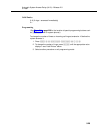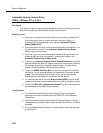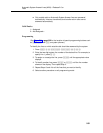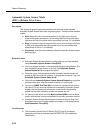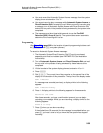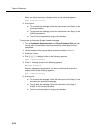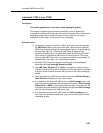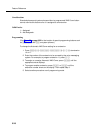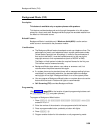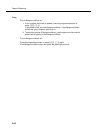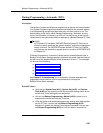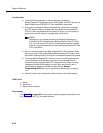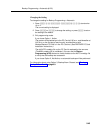
Automatic VMS Cover (#310)
5-37
Automatic VMS Cover (#310)
Description
This feature applies only if you have a voice messaging system.
This System Programming procedure automatically routes an extension’s
unanswered intercom and transferred calls to the Call Answer Service of the voice
messaging system after a specified number of rings (default for all system
extensions is three rings), so callers can leave a message.
Related Features
■ To manually change an extension’s VMS Cover state, users can program
the VMS Cover feature on a button with lights. Users can then press the
VMS Cover button to activate the feature (green light on) or deactivate the
feature (green light off). (If Automatic VMS Cover is Assigned at an
extension, the green light is lit
automatically
after programming the VMS
Cover button to indicate that VMS Cover is currently active. If this is the
case, and the VMS Cover button is pressed, the feature is deactivated. To
activate VMS Cover again, you must press the button.)
■ Automatic VMS Cover also applies to outside calls on lines assigned
ownership with Line Coverage Extension (#208).
■ Use VMS Cover Rings (#117) or (#321) to change the number of times
intercom and transferred calls or outside calls on lines assigned ownership
ring at all system extensions before they are sent to the voice messaging
system.
■ Users with Automatic VMS Cover turned on can activate Do Not Disturb to
Send All Calls immediately to their voice mailbox.
■ If an extension has Automatic VMS Cover and Call Coverage active, calls
ring at the covering extension after the specified number of Call Coverage
Rings (#116) or (#320). If the covering extension does not answer, the call
is routed to the voice mailbox of the extension that activated Call Coverage
after the specified amount of VMS cover rings.
■ If an extension has Automatic VMS Cover and Call Forwarding active,
calls ring at the forwarding destination; they are not covered by the voice
messaging system.



